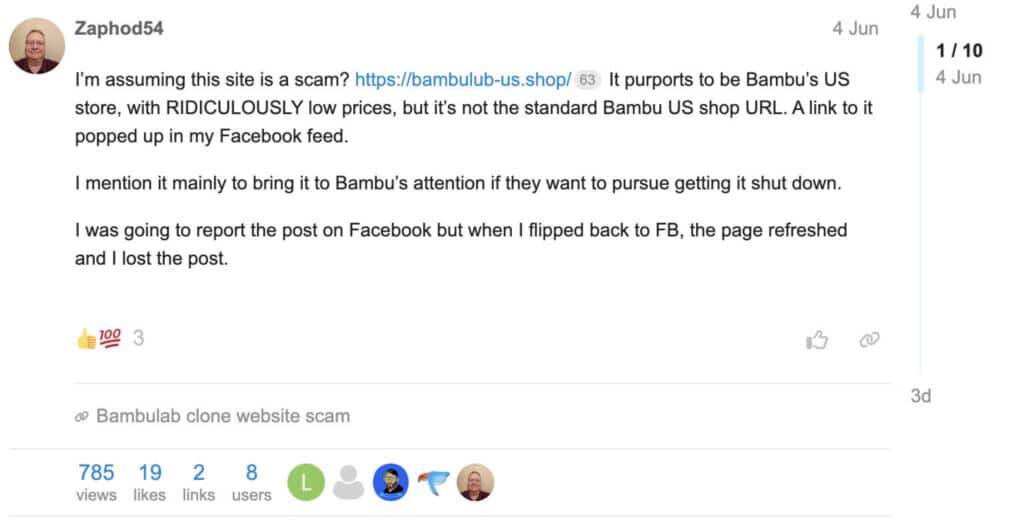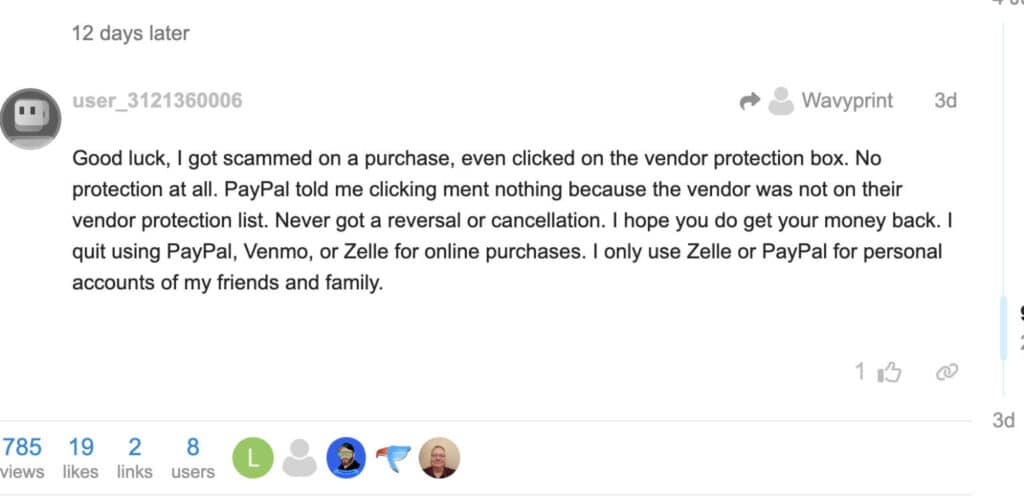In recent days, a serious alert has spread through the 3D printing community: an online scam is hitting consumers trying to buy Bambu Lab printers. The con is both simple and effective-scammers have set up fake websites that look nearly identical to Bambu Lab’s official site, using them to sell products at unbelievably low prices and trick unsuspecting buyers.
How the scam works

These fake sites aren’t sloppy copies; they’re carefully crafted replicas of the official portal, complete with banners, product photos, videos from popular influencers, and even references to real awards the company has won. A perfect bait for anyone looking for a deal.
The offers? Top-tier 3D printers like the Bambu Lab X1 or the latest H2D model at ridiculously low prices-sometimes claiming discounts as high as 75%. For example, one fraudulent site listed the H2D for just over $500, while the genuine retail price is around $2,000.
To push buyers into quick decisions, these sites use psychological tricks: countdown timers, fake stock warnings, and pop-ups showing fictitious numbers like “43 people viewing now” or “33 items in cart,” creating a false sense of urgency.
The scam extends to social media

But the deception doesn’t stop at fake websites. The scammers are also using paid ads on Facebook and Instagram, part of Meta’s advertising network, to run ads that mimic official Bambu Lab campaigns. Some ads display links that look legitimate-like bambu.com-but redirect users to fake domains such as bamboo-3d.com, which have no ties to the company.
Domain checks reveal many of these scam sites were registered just days before their ads launched, indicating a fast, coordinated operation that keeps cycling through new sites as old ones get discovered and shut down.
Community response and platform accountability
3D printing enthusiasts and professionals have been raising the alarm, mainly via private Facebook groups and specialized forums. Unfortunately, these warnings often stay confined within small circles and don’t reach a wider audience.
Many scam victims report it’s tough to recover lost money, especially when using unsecured or non-refundable payment methods like wire transfers or cryptocurrencies.
This situation highlights a bigger issue: the responsibility of advertising platforms like Meta. Despite numerous reports of fraudulent ads, the removal process has been slow or partial, allowing these scams to continue. Experts and consumers are demanding stricter ad verification and faster action to block deceptive content.
How to protect yourself from these scams
Given the complexity and speed of these schemes, experts and influencers such as the YouTube channel Maker’s Muse recommend some key precautions:
- Always double-check website URLs for typos, extra dashes, or unusual domain extensions.
- Use WHOIS tools to verify how long a domain has been registered-legitimate companies usually have domains active for years, not just days.
- Be wary of discounts that seem too good to be true-70% off a new printer probably is.
- Use secure payment methods like credit cards or digital wallets with buyer protection, and avoid direct transfers without guarantees.
- When in doubt, go straight to the official company website or contact their customer service for confirmation.
Scams in 3D printing: a recurring problem
This isn’t the first time scams have appeared in the 3D printing space. Crowdfunding platforms have occasionally been abused with fake campaigns that closely mimic legitimate projects, confusing backers and damaging trust.
For instance, in 2015, Canadian startup NEA 3D faced a copycat campaign on Kickstarter that mirrored their official Indiegogo launch, complete with branding and images, misleading potential supporters. Similarly, Pirate3D’s Buccaneer printer campaign encountered a nearly identical duplicate on another platform, which was eventually removed after causing confusion.




